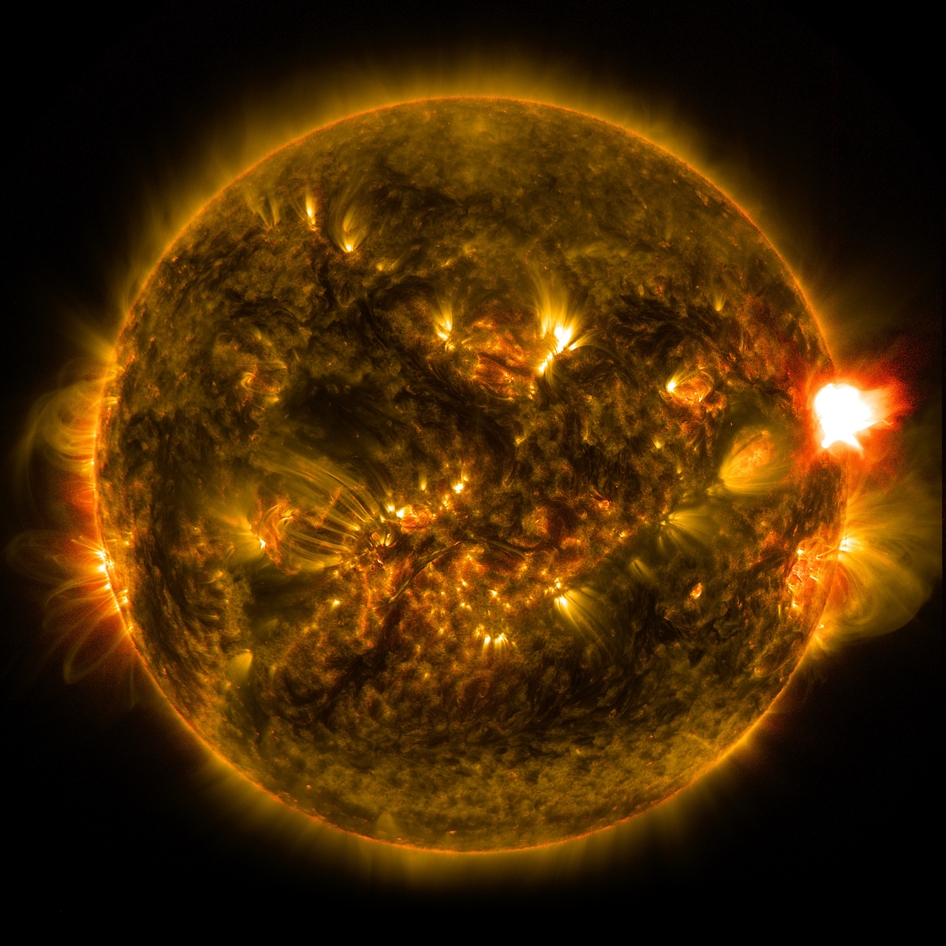Jan. 13, 2015 (NASA) -- The sun emitted a mid-level solar flare, peaking at 11:24 p.m. EST on Jan. 12, 2015. NASA’s Solar Dynamics Observatory, which watches the sun constantly, captured an image of the event. Solar flares are powerful bursts of radiation. Harmful radiation from a flare cannot pass through Earth's atmosphere to physically affect humans on the ground, however -- when intense enough -- they can disturb the atmosphere in the layer where GPS and communications signals travel.
 An M-class solar flare erupts from the right side of the sun in this image from shortly before midnight EST on Jan. 12, 2015. The image blends two wavelengths of light -- 171 and 304 angstroms -- as captured by NASA's Solar Dynamics Observatory. Image Credit: NASA/SDO
An M-class solar flare erupts from the right side of the sun in this image from shortly before midnight EST on Jan. 12, 2015. The image blends two wavelengths of light -- 171 and 304 angstroms -- as captured by NASA's Solar Dynamics Observatory. Image Credit: NASA/SDO
To see how this event may affect Earth, please visit NOAA's Space Weather Prediction Center at http://spaceweather.gov, the U.S. government's official source for space weather forecasts, alerts, watches and warnings.
 Giant magnetic loops dance on the sun’s horizon in concert with the eruption of a solar flare -- seen as a bright flash of light -- in this imagery from NASA’s Solar Dynamics Observatory, captured Jan. 12-13, 2015. Image Credit: NASA/SDO
Giant magnetic loops dance on the sun’s horizon in concert with the eruption of a solar flare -- seen as a bright flash of light -- in this imagery from NASA’s Solar Dynamics Observatory, captured Jan. 12-13, 2015. Image Credit: NASA/SDO
This flare is classified as an M5.6-class flare. M-class flares are a tenth the size of the most intense flares, the X-class flares. The number provides more information about its strength. An M2 is twice as intense as an M1, an M3 is three times as intense, etc.












